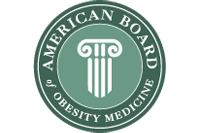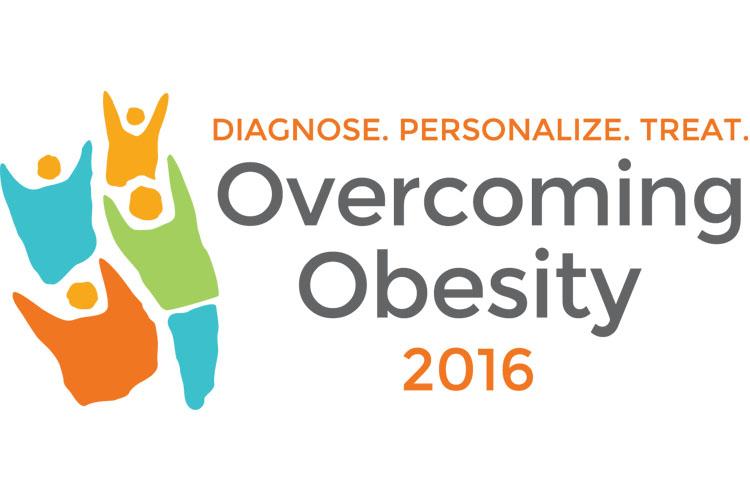FDA Finalizes New Nutrition Labels
On May 20, the U.S. Food and Drug Administration (FDA) finalized the content and design of the new nutrition facts label on packaged foods. Representatives from the FDA said the new label will "make it easier for consumers to make informed choices about what they're eating." The changes are based on updated research in the field linking nutrition to obesity and obesity-related conditions. The new label includes information about added sugars, vitamin D, and potassium, as well as new or updated daily values. Read more on the FDA blog or in the official press release.
|
 |
 OMA Retains Seat in the AMA House of Delegates
Special guest column by Ethan Lazarus, MD, OMA secretary/treasurer and AMA delegate
The American Medical Association (AMA) recently found OMA to be in compliance with the requirements to maintain a seat in the AMA House of Delegates. We had to demonstrate that a certain percentage of our members are also members of AMA. By retaining our seat in the House of Delegates, we can continue to influence policy, introduce initiatives, and ensure that the AMA keeps talking about obesity.
It has been my experience that the AMA is very invested in improving the health of our nation; in fact, one of its primary strategic objectives is to improve health outcomes. Right now, AMA is focusing on hypertension and type 2 diabetes, both of which are directly impacted by obesity. With this in mind, at every juncture over the past three years, the AMA has supported resolutions that will improve obesity care.
Most recently, the AMA passed a resolution, of which OMA was the primary author, agreeing to research the state of obesity education, identify gaps in education, and make tools available to fill those gaps. Last fall I wrote a letter requesting that the AMA not only support the Treat and Reduce Obesity Act but actively lobby with us to gain congressional support. AMA agreed and offered to aid in our advocacy efforts, and on May 13 an AMA staff member joined Dr. Susan Isensee, Chris Gallagher, and Chelsea Clark on Capitol Hill.
At the upcoming House of Delegates meeting in June, we will debate a very interesting resolution, calling upon the AMA to "support efforts to limit the consumption of foods and beverages that contain added sweeteners, including but not limited to ending corn subsidies for the production of high fructose corn syrup." I'll update you on the outcome of this (and other relevant discussions) after the meeting next month.
None of this would be possible without you! We have a seat because members of OMA recognize how important this is. Help us continue to strengthen our voice by becoming a member of AMA, designating OMA as your primary specialty society, and adding your AMA member number to your OMA account. |
 |
OMA Attends AAPA Meeting
Two OMA members attended the American Academy of Physician Assistants meeting last week in San Antonio. Here, they each give us a summary of their experiences at the conference.
|
Special report by Amy Ingersoll, PA-C  I had an incredible opportunity to speak on the topic of obesity in front of my fellow PAs at this year's AAPA meeting. AAPA held its first six-hour Obesity Initiative Symposium, made available to more than 12,000 PAs in attendance. The symposium covered topics related to making a difference in the obesity epidemic: pharmacotherapy, pediatric obesity, motivational interviewing, and more. The lecture I presented focused on starting an obesity medicine practice.
AAPA has a task force tackling a three-year initiative to increase education and awareness of obesity as a disease in the PA profession. Future plans for AAPA include development of online CME modules for PAs, regional workshops and more obesity lectures at state conferences, incorporation of modules into PA school curriculums, and launch of Interdisciplinary Specialist Certification in Obesity and Weight Management (administered by the Commission on Dietetic Registration). It was invigorating to see the forward movement planned by AAPA but slightly overwhelming because of how far we have to go to further educate our peers.
|
|
|
|
Executive Director
Sponsorships and Exhibits Manager
Operations Manager
Education Coordinator
Communication Manager
Executive Director of the Obesity Treatment Foundation
|
|
101 University Blvd.,
Suite 330
Denver, CO 80206
|
|
|
Special report by Jenny Seger, MD  At the AAPA meeting, I had the privilege to represent OMA as a special guest observer at the AAPA House of Delegates portion of the meeting. The first portion of the House of Delegates meeting consisted of speeches from various AAPA leaders; each touched on some aspect of the business of AAPA. The enthusiasm for the profession as a whole was universal and I must say, quite contagious. I learned that this year marks the 50th anniversary of AAPA, and that AAPA's membership consists of more than 54,000 physician assistants. AAPA's growth has tripled in recent years compared to similar organizations.
While the House of Delegates consists of 274 delegates from a wide range of specialties and special interest groups, obesity medicine is not one of them. We hope to see that change in the coming years. As members of the greater health care community, we must work together to provide comprehensive, compassionate care for patients with obesity. This includes educating health care providers and other stakeholders about the evaluation and treatment of obesity. We hope that OMA can continue to build a bridge with our colleagues at AAPA, but we need your help. If you are a physician assistant and a member of OMA, help us raise awareness of who we are and what we do by joining the advanced practitioners committee. The committee is already working hard on a number of game-changing initiatives, and you could be a part of it! (Please note: Members are allowed to apply to join committees any time, but enrollment does not open until Sept. 1.)
|
 |

Apply to Sit for the 2016 Obesity Medicine Certification Exam
Become certified in obesity medicine this year through the American Board of Obesity Medicine (ABOM). The 2016 certification exam will be administered at computer-based testing centers from Dec. 3-10. The online application portal is now open, and the early application deadline is July 15. To apply, you must have:
- Proof of completion of a residency in the U.S. or Canada
- Proof of an active medical license in the U.S. or Canada
- Proof of an active certification in an ABMS board
- 60 CME credit hours on the topic of obesity, including at least 30 live credits
All CME offered by OMA is eligible to count toward your 60 CME credit hour requirement. Earn credit online at the Obesity Medicine Academy -- you can get the bundled Review Course for the ABOM Exam, worth 13 CME hours, plus much more -- and register for Overcoming Obesity 2016 (Sept. 21-25) to earn 30 live CME hours.
|
 |
 My Day on Capitol Hill
Special guest column by Susan Isensee, MD, FAAFP
On May 13, I had the privilege of accompanying Chris Gallagher from the Obesity Care Continuum and Chelsea Clark from The Obesity Society on Capitol Hill in Washington, D.C., to review the details of the Treat and Reduce Obesity Act (TROA) and introduce National Obesity Care Week (NOCW). We met with members of the staff of the Wisconsin Congressional delegation, including Senators Baldwin and Johnson, and Representatives Kind, Pocan, Sensenbrenner, Grothman, and Duffy. Lindsey Brill of the American Medical Association joined us during our conversation with Senator Baldwin. We encouraged the legislative staff to support the TROA and upcoming legislation on the NOCW. We logged more than 10,000 steps in about four hours and gained support from the Badger State Congressmen and Senators. It was an honor to represent OMA on this important endeavor once again. |
 |

This Week's Featured Presentation is "Processed Food: An Experiment that Failed"
Visit the Obesity Medicine Academy to purchase and watch this presentation by Dr. Robert Lustig. In this presentation, Dr. Lustig discusses the health impact of processed food in the U.S. After you watch the presentation online, pass the quiz to claim 1 hour of CME/CE credit. |
Obesity Treatment Foundation
|
 Submit Your Abstract as an Oral or Poster Presentation at Overcoming Obesity 2016 Submit Your Abstract as an Oral or Poster Presentation at Overcoming Obesity 2016
|
 |
Effects of Lorcaserin on Fat and Lean-mass Loss in Patients with Overweight and Obesity without and with Type 2 Diabetes Mellitus: The BLOSSOM and BLOOM-DM Studies
Apovian, C., et al. Diabetes, Obesity, and Metabolism, 2016.
The effect of lorcaserin on body composition was examined in a subset of patients from the BLOSSOM and BLOOM-DM studies. Patients with and without type 2 diabetes who received diet and exercise counseling with either lorcaserin 10 mg BID or placebo received DXA scans. Scans were repeated at 24 weeks and 52 weeks. At week 52, patients without diabetes on lorcaserin lost significantly more fat mass relative to placebo (-12.06% vs. -5.93%). In patients with diabetes, fat mass was also decreased with lorcaserin relative to placebo (-9.87% vs. -1.65%). More fat mass was lost in the trunk region with lorcaserin compared to placebo (without diabetes: -3.31% vs. -2.05%; with diabetes: -3.65% vs. -0.36%). This study shows that weight loss caused by lorcaserin is associated with a greater degree of fat-mass loss than lean-mass loss, and most of the fat loss is from central adiposity. View article
|
The Fat Content of Milk Does Not Affect the Plasma Glucose and Insulin Responses to a Meal
Li, J., et al. FASEB Journal, 2016.
A study was conducted to assess the postprandial glycemic and insulinemic responses to skim milk, low-fat milk (1% fat), whole milk (3.5% fat), and water consumed with a standard breakfast sandwich. On four mornings separated by at least one week, each of the 46 subjects with overweight or obesity consumed a standard breakfast sandwich with one of the four beverages (240 mL) in random order. The milk beverages each contained 12 grams of carbohydrate. Results showed that the fat content of milk did not affect the postprandial glycemic and insulinemic responses to the meal. Compared to water, consuming milk with a meal increased the postprandial insulin response but did not increase the glycemic response.
View article
|
Decreased Circulating Levels of Spexin in Children with Obesity
Kumar, S., et al. Journal of Clinical Endocrinology & Metabolism, 2016.
Spexin is a novel human peptide that reduces adipocyte uptake of long-chain fatty acids and is markedly down-regulated in the adipose tissue of humans with obesity. Previous studies in adults suggest that spexin is likely involved in regulating the body's energy balance and fat mass. There are no reports on spexin concentrations in children; therefore, a study was conducted in 51 teens with obesity and 18 normal-weight teens ages 12-18 to test levels of spexin. The study found that teens with the lowest levels of spexin were more than five times more likely to have obesity than those with the highest levels. Larger studies of spexin should be conducted to validate the observations in this study and determine the clinical significance of these findings. View article
|
 |

Overcoming Obesity 2016: Chicago, Sept. 21-25
Overcoming Obesity 2016 is your primary source for clinical obesity education. This fall we're offering the Review Course for the ABOM Exam -- the course preferred by physicians to help them prepare for the obesity medicine certification exam -- and the Fall Obesity Summit, which contains an all-new lineup of topics and speakers. Overcoming Obesity 2016 takes place in Chicago on Sept. 21-25. Register online now! |
Review Course for the ABOM Exam
13 CME/CE | Sept. 21-22
Helps prepare those planning to take the American Board of Obesity Medicine (ABOM) certification exam.
| Fall Obesity Summit
17 CME/CE | Sept. 23-25
Addresses topics related to the clinical treatment of obesity and obesity-related conditions.
|
|

Obesity Medicine Basics
Obesity Medicine Basics returns this summer to four cities around the country. This introductory-level course is an opportunity for us to spread the word about obesity medicine to providers in a primary care setting. As a member of OMA, you can earn rewards by referring others to attend Obesity Medicine Basics. Your efforts referring your colleagues to this course will help grow the field of obesity medicine and increase the number of health care professionals with a basic understanding of how to treat obesity. Upcoming Courses: |
|
|
|
The Obesity Medicine Association and the Obesity Treatment Foundation thank our 2016 Corporate Advisory Council members for their continuous support.
|
© 2016 Obesity Medicine Association. All rights reserved. Materials may not be reproduced, redistributed or translated without written permission. Advertising disclaimer: Under a policy approved by the OMA executive committee and exhibitor/advertiser review committee, commercial companies may apply to advertise in OMA publications. Approval does not imply endorsement or official recognition of particular products or services.
|
|
|
|